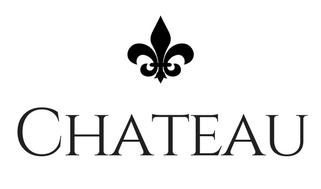We’re looking forward to an upcoming annual tradition in our family: attending Madison-Bouckville Antique Week! In a world dominated by mass-produced goods and fleeting trends, there's a growing appreciation for the timeless allure of antiquing and the creative magic of upcycling. These practices offer more than just a means to acquire unique items or reduce waste; they embody a spirit of preservation, creativity, and sustainability.
Antiquing, the art of hunting for and collecting antiques, has a long and storied history. It traces its roots back to the 19th century when the Industrial Revolution spurred a fascination with the past amidst rapid technological advancement. As people yearned for connection to bygone eras, they turned to antiques—objects imbued with history, craftsmanship, and nostalgia. What began as a pursuit of the elite evolved into a beloved pastime accessible to all, fueled by the proliferation of antique shops, markets, and online platforms.
Central to the allure of antiquing is the thrill of discovery. Roaming through dusty shelves and cluttered stalls, enthusiasts embark on treasure hunts, seeking hidden gems and forgotten relics. Each item tells a story, whispering secrets of its origins, previous owners, and the passage of time. Whether it's a weathered bookcase or a tarnished silver teapot, every find carries a sense of mystery and intrigue, inviting contemplation and sparking imagination.
Yet, antiquing is more than just a quest for material possessions; it's a celebration of craftsmanship and heritage. Antique furniture, for instance, showcases the skill and artistry of past generations, with intricately carved details and sturdy construction that stand the test of time. Similarly, vintage clothing reflects the evolving tastes and styles of bygone eras, offering a glimpse into the fashion trends and societal norms of yesteryears. By preserving and cherishing these artifacts, antiquing honors the craftsmanship and ingenuity of the past, ensuring that its legacy endures for generations to come.
However, antiquing is not merely about preserving the past; it's also about reimagining the present through the lens of history. This is where upcycling enters the stage, breathing new life into old treasures through creative reinvention. Unlike recycling, which breaks down materials to create new products, upcycling involves creatively transforming existing items into something of equal or greater value. Upcycling encourages resourcefulness and innovation, as individuals seek to minimize waste and environmental impact by salvaging and repurposing materials. Common upcycling projects include turning old furniture into stylish décor pieces, converting glass jars into candle holders, or repurposing vintage textiles into trendy clothing or accessories. It's a form of alchemy that transcends mere restoration, infusing discarded items with fresh purpose and meaning.
Despite their differences, antiquing and upcycling share several key benefits and motivations. Both practices promote sustainability by extending the lifespan of existing items and reducing the demand for new production. By reusing and repurposing materials, antiquers and upcyclers contribute to the conservation of resources and the reduction of landfill waste. Additionally, both activities foster a sense of creativity and individuality, allowing practitioners to express their personal style and preferences through curated collections or unique handmade creations.
Moreover, antiquing and upcycling contribute to cultural preservation by honoring and revitalizing traditional craftsmanship and design techniques. Through the restoration and appreciation of antique objects, antiquers help preserve the cultural heritage embodied in these artifacts, ensuring that future generations can continue to learn from and appreciate the past.
However, while antiquing and upcycling offer tangible environmental and cultural benefits, they are not panaceas for the broader issues of consumerism and waste. To truly address these challenges, systemic changes are needed at the levels of production, consumption, and waste management. Policies that promote extended producer responsibility, incentivize eco-friendly design, and support circular economy initiatives can help reduce the environmental footprint of goods and encourage more sustainable consumption patterns.

